MARCH 12, 2025: The Aeolian Islands are a group of seven volcanic islands off the north coast of Sicily. Some of them still have active volcanoes. Lipari, the largest of the islands, lies about 36 km (22 miles) north of Milazzo. Our plan for today was to visit Lipari.

To reach the island from Milazzo, we took a passenger hydrofoil boat, that arrived in the main town—also called Lipari—in just over an hour. The last time we took a hydrofoil was two years ago in Greece, when we visited the island of Aegina. I had described that ride as feeling like an hour of turbulence in an airplane, so I was a bit apprehensive about today’s journey.
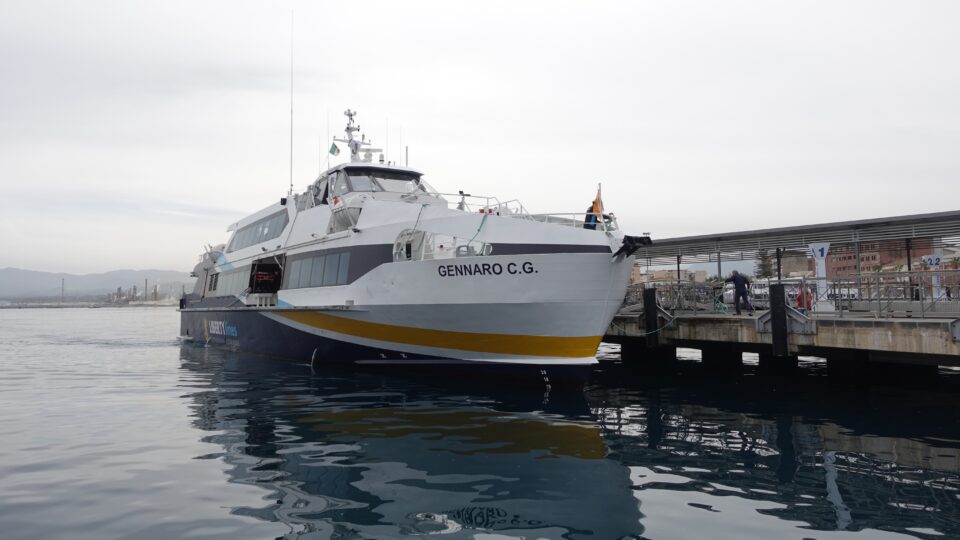

Today the sea was calm, and the ride went smoothly, with even a few moments of sunshine breaking through the clouds. The ferry made a brief stop at Vulcano, the Aeolian Island closest to Milazzo, known for its active volcano and therapeutic mud baths. A few passengers disembarked before we continued the short journey from there to Lipari.
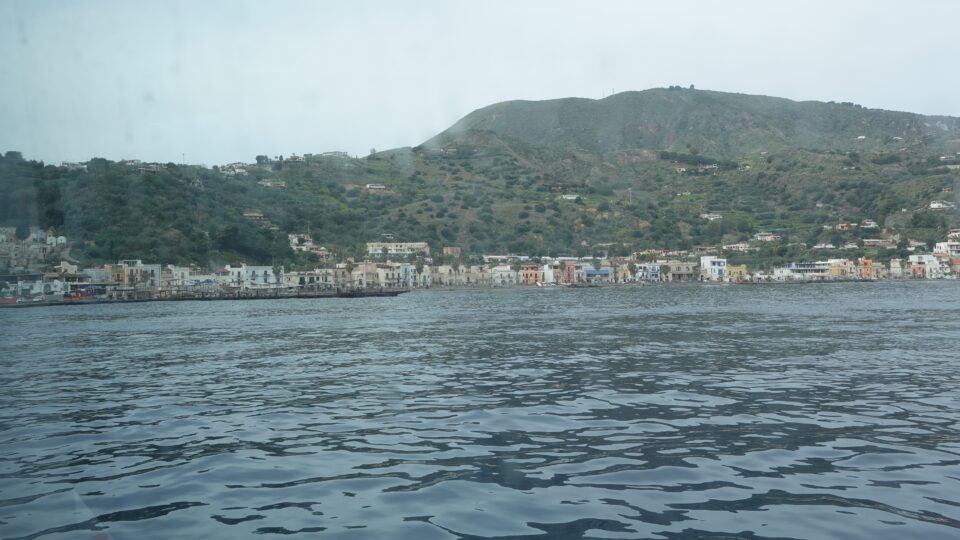
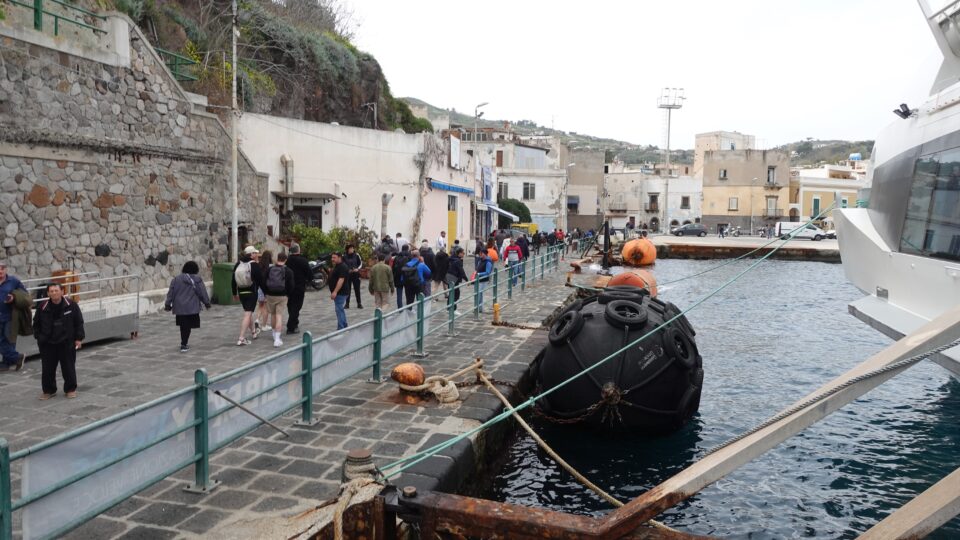
One of the main attractions in Lipari’s town is the archaeological museum, located within the castle at the top of the hill above the port.
While Lipari has never had an organized Jewish community, historical records suggest that some Jews sought refuge here at times. One theory proposes that in the 10th century, the anonymous author of Josippon (Sefer Yosippon) fled anti-Jewish violence in Amalfi, took a ship to Lipari, and remained there for nine months. During his time on the island, he is believed to have written Josippon, a Hebrew historical chronicle recounting Jewish history from Adam to the destruction of the Second Temple. The book, based on a Latin translation of the works of Jewish historian Flavius Josephus, as well as apocryphal texts and medieval legends, became a significant historical source for Jewish communities in the Diaspora and was later printed in large numbers.
In 1979–80, an archaeological excavation in Lipari uncovered an underground burial chamber containing Jewish tombs, which are now supposedly exhibited at the archaeological museum. This museum was our first destination upon arrival.
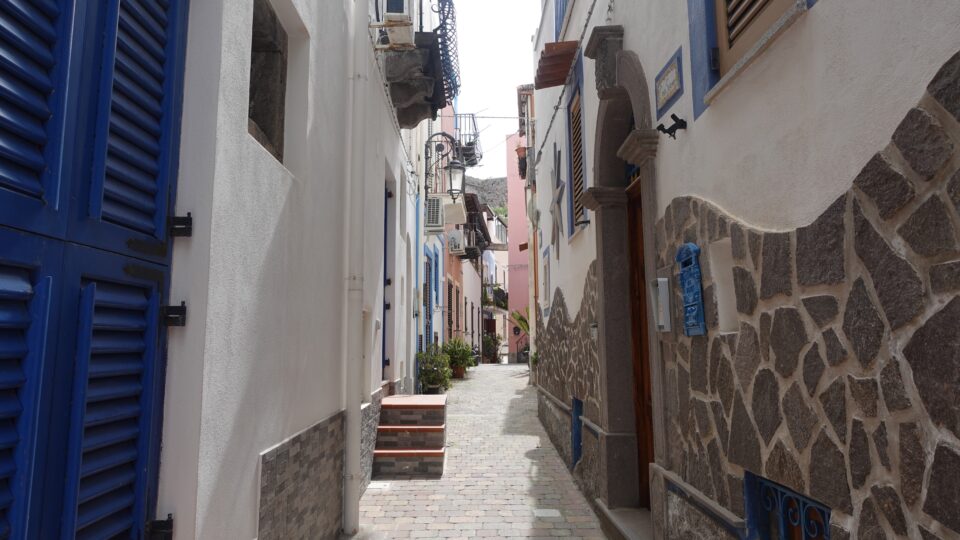
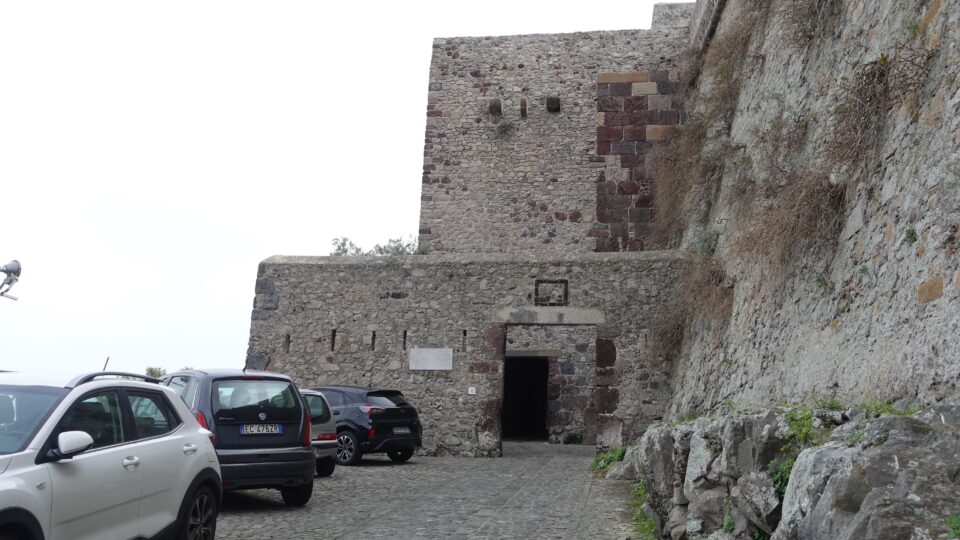
When we reached the museum’s ticket office, it was locked. A moment of panic—had we come all this way only to find the museum closed? Google had said it was open!
Fortunately, an outdoor map revealed that the museum complex extended over several buildings within the castle walls. We found one of the buildings open, where a staff member directed us to the correct place to buy tickets.
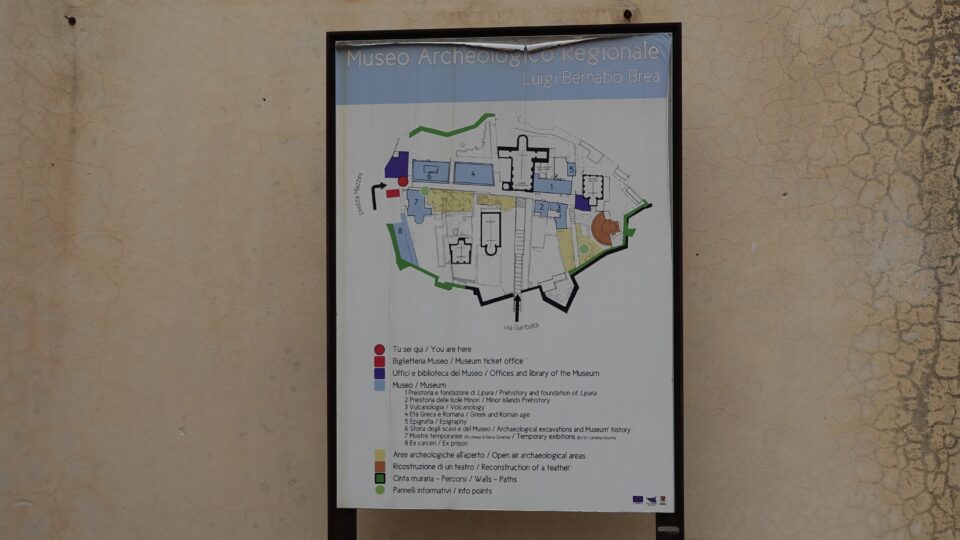
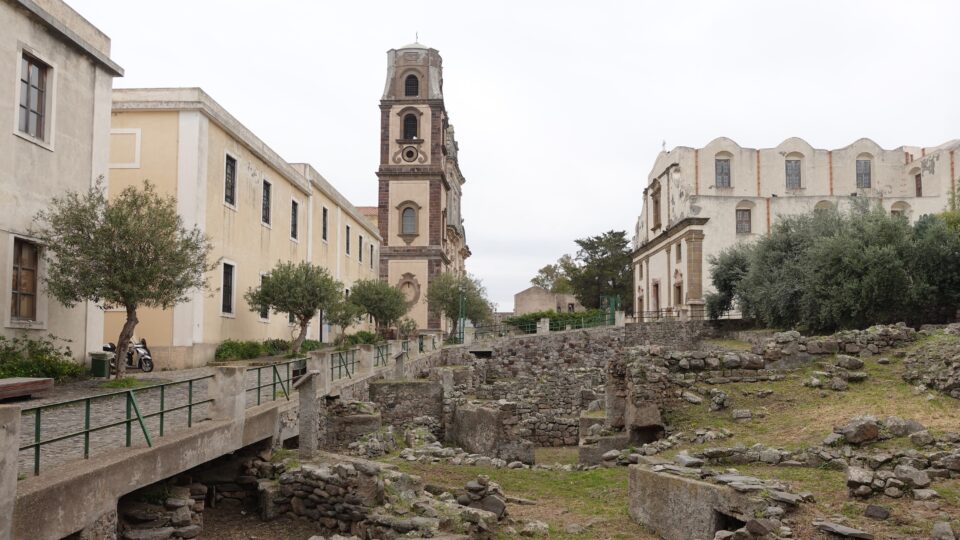
The museum was huge – eight buildings and most buildings had multiple floors, and each floor had many rooms. It was amazing and impressive. Somewhere among all these exhibits, we were looking for a tombstone with a menorah engraved on it, a tombstone which we did not even have a photo of and had no idea what it looked like.
We started our search in the building we thought would most likely have it – the collection from the Greco Roman times. We combed through three floors, through dozens of different rooms filled with many interesting things but did not find what we were looking for.
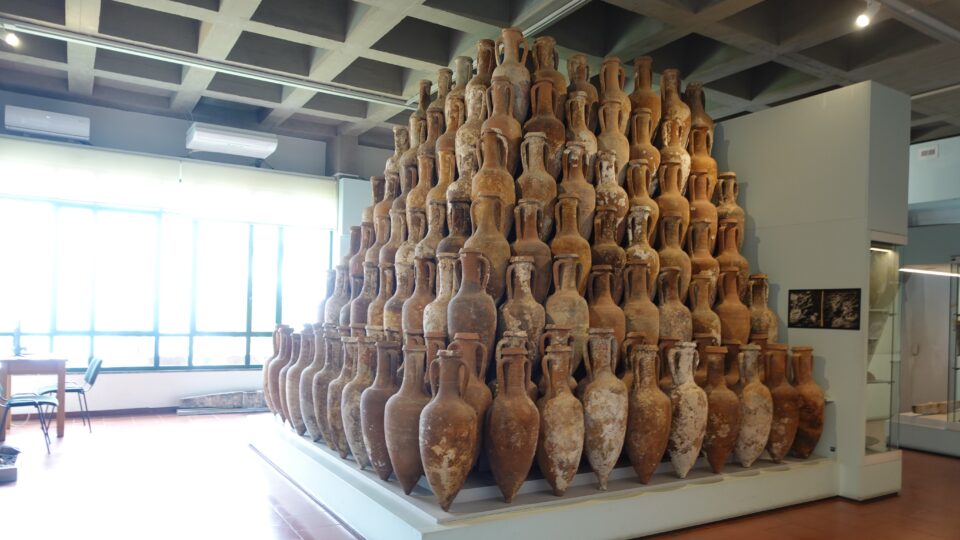
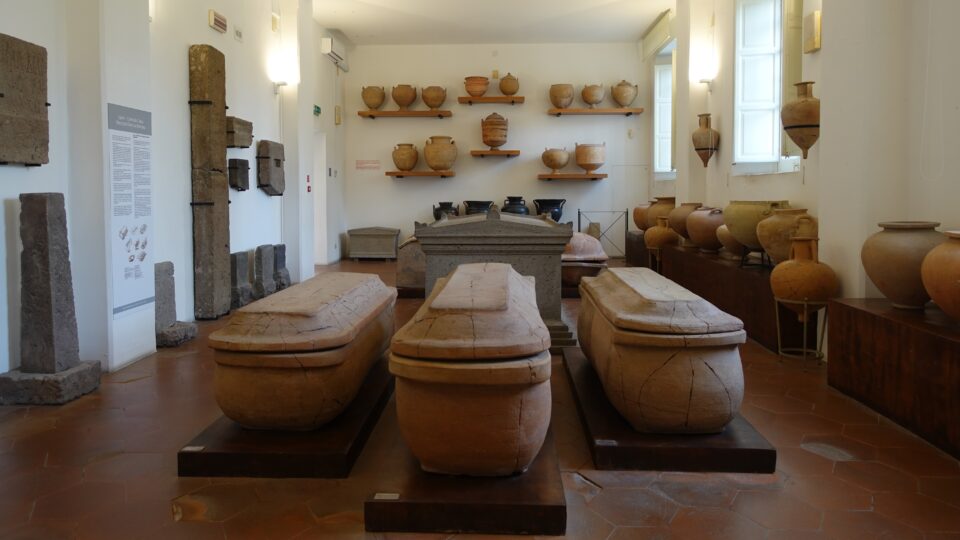

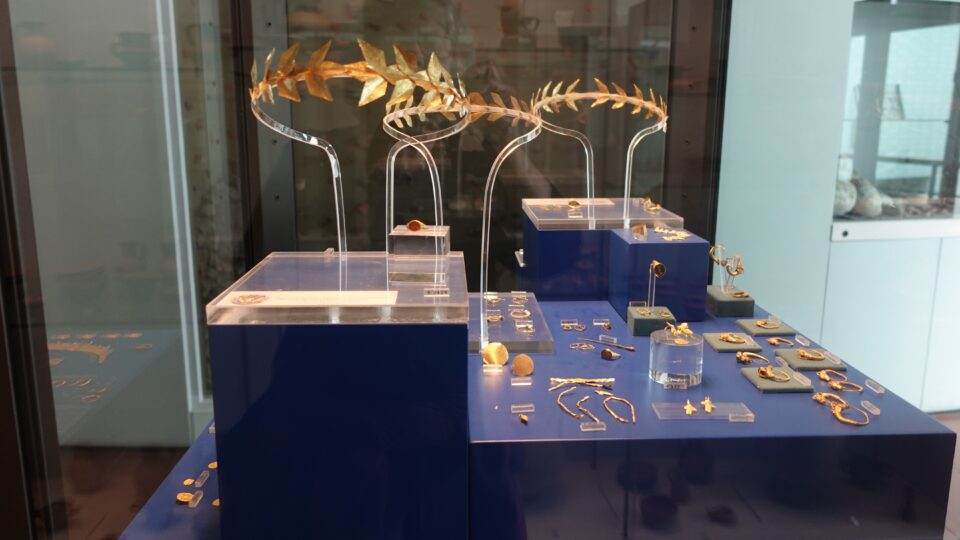
We asked the person at the front desk (thank you Google Translate) , who directed us—oddly—to the Prehistoric Exhibit in a neighboring building. This made little sense, but we checked anyway. Nothing.
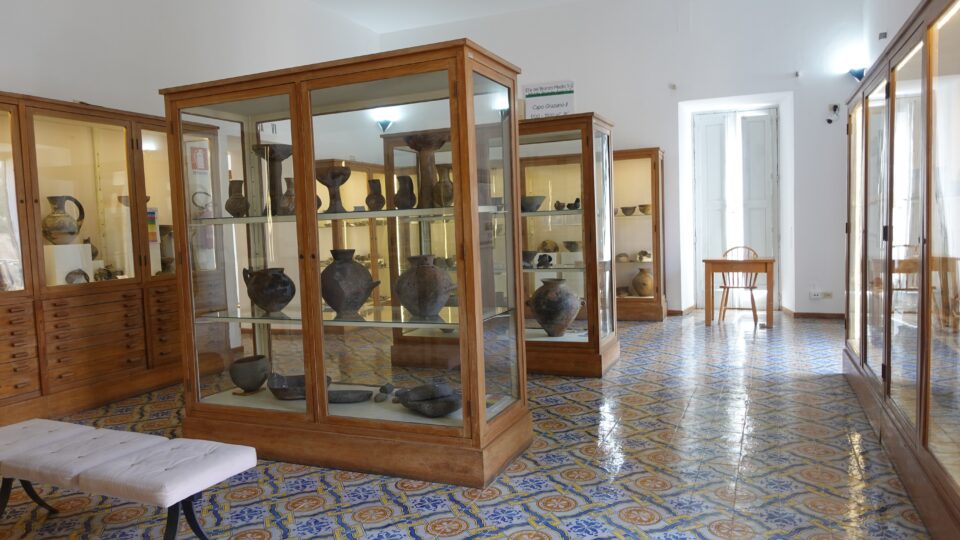
Exiting the second building, we found another staff member, who understood some English, but did not recognize the word “menorah.” We quickly found an image online and showed him. His face lit up – he knew exactly what we were looking for! He instructed us to return to the first building and check the third floor.
We returned to the Greco Roman collection, climbed three flights and once again, started searching among the many rooms. In the far corner of Room XXVI – voilà! A display case of Jewish artifacts.
The artifacts were discovered in Lipari in a Jewish hypogeum (an underground burial structure used for burials, rituals, or storage) dating back to the 4th–5th century C.E. One tombstone prominently featured a menorah. Bingo!
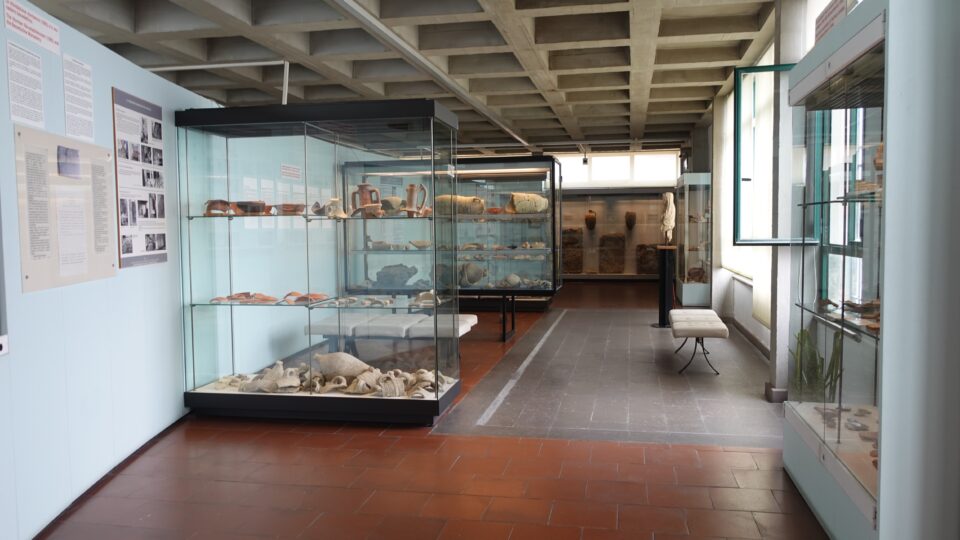
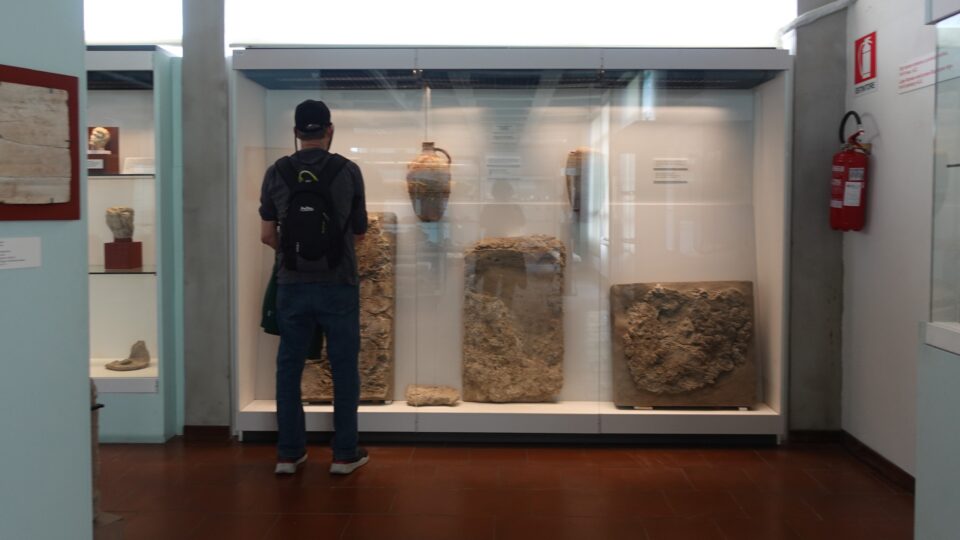
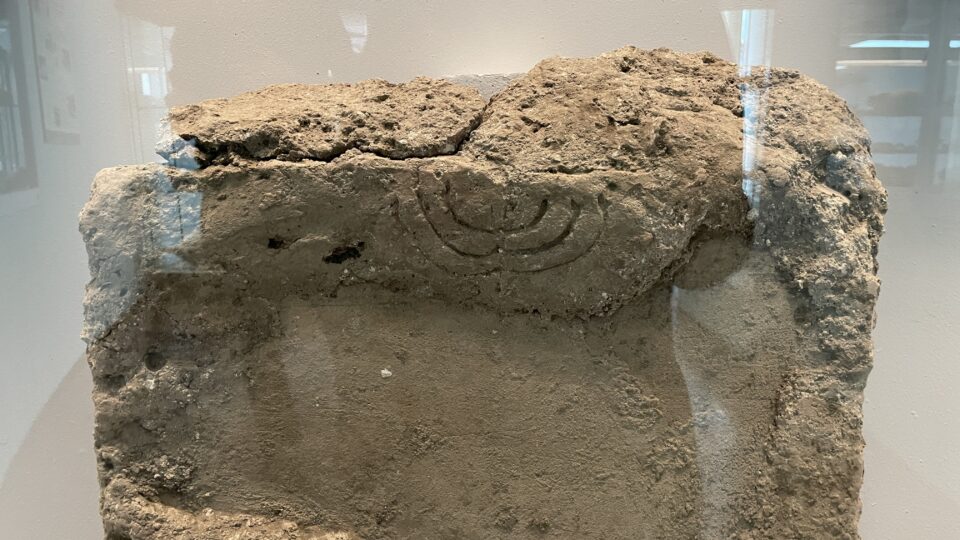
With our mission accomplished, we now had time to explore the rest of the castle grounds and take in the stunning views, overlooking the town and sea below.
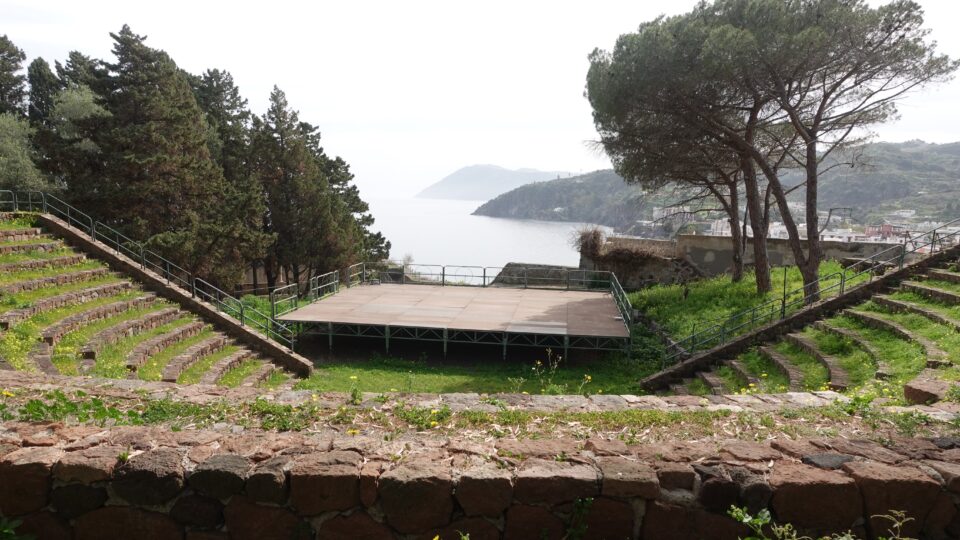
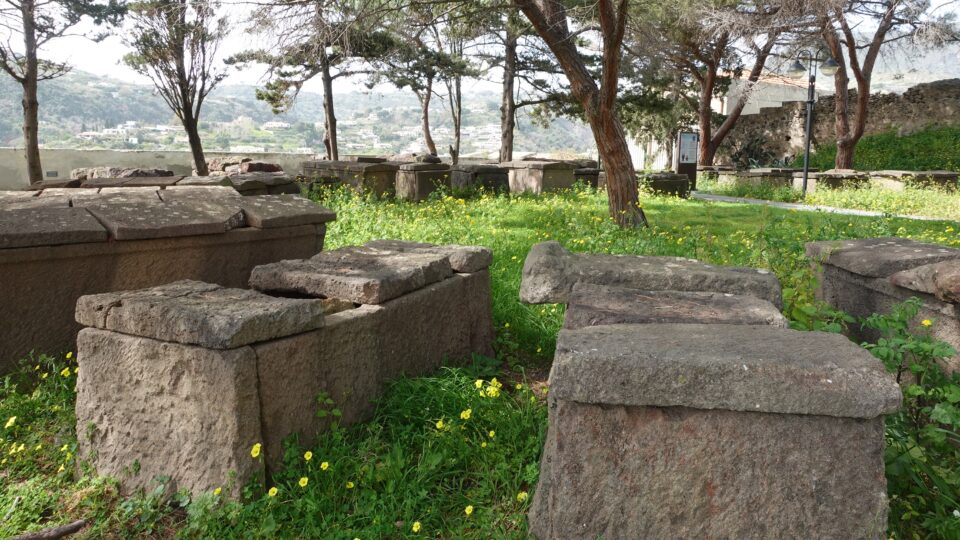
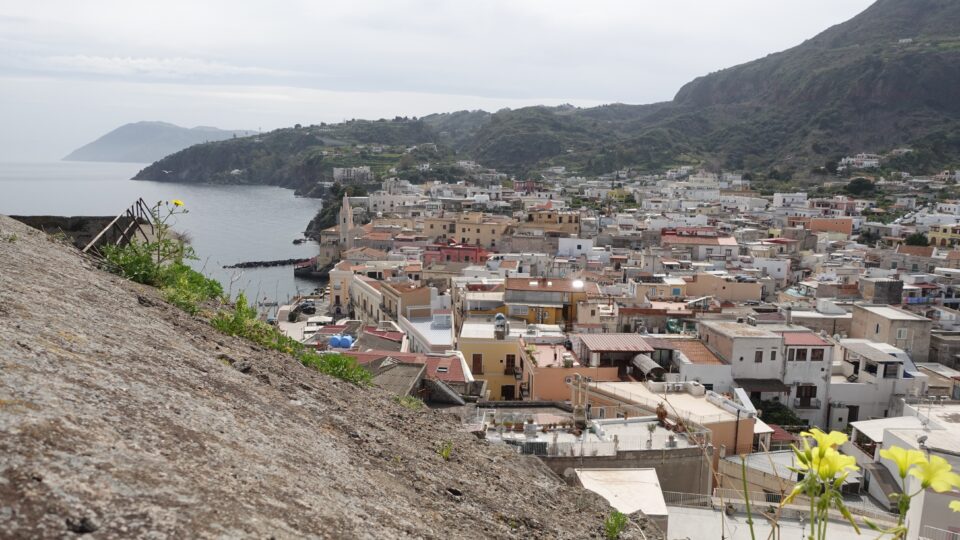
We then descended the steps into the main part of town. To our surprise, all the shops were closed, and the streets were eerily quiet, with only a few locals out and about.
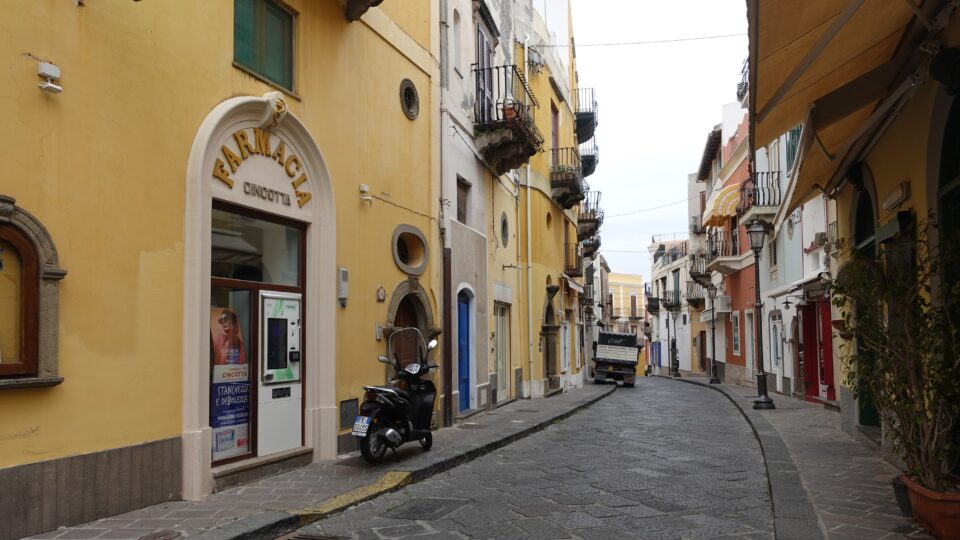
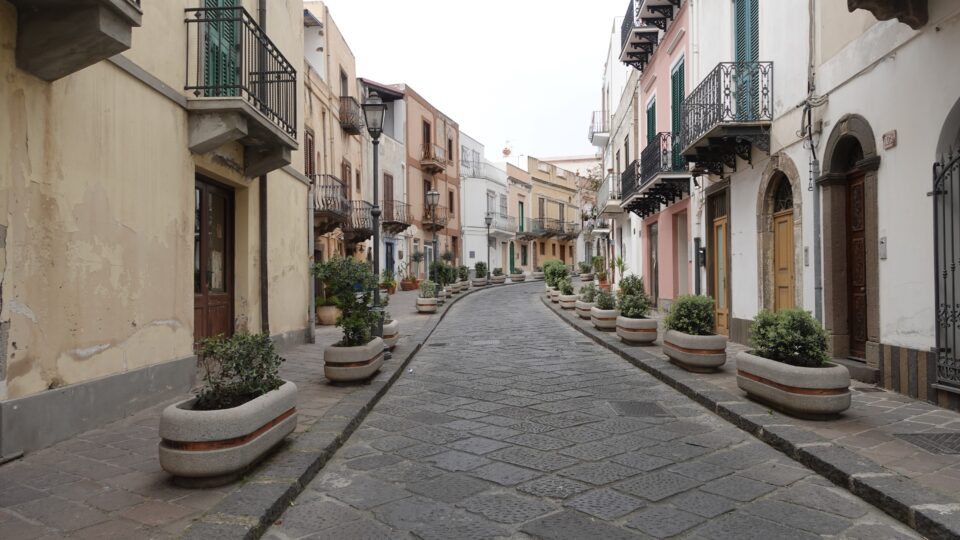
Lipari has two ports, the main one, where we had landed and a smaller one, mainly for fishing boats. At the small port, we sat down for a picnic lunch. The weather was turning colder and cloudier, and with several hours left until our return ferry, we decided to change our tickets for an earlier departure.
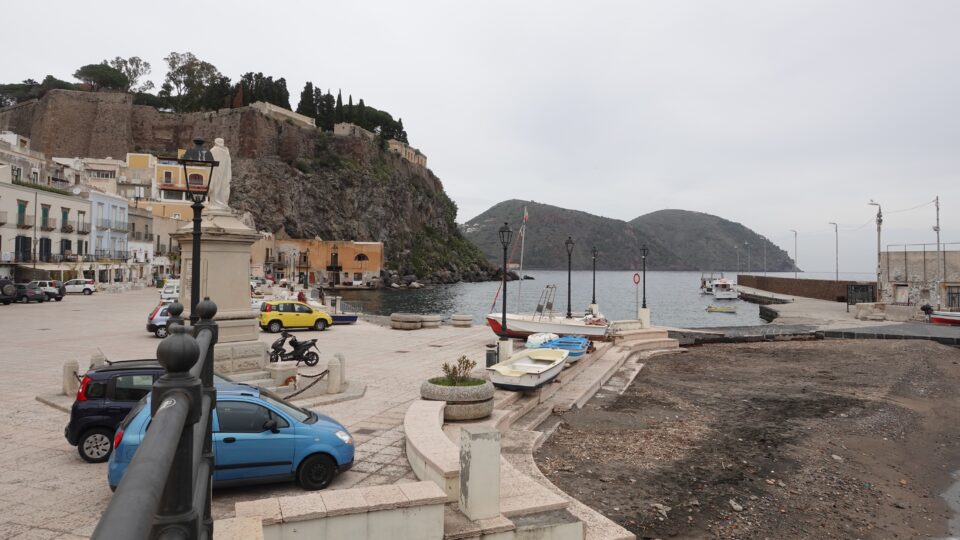
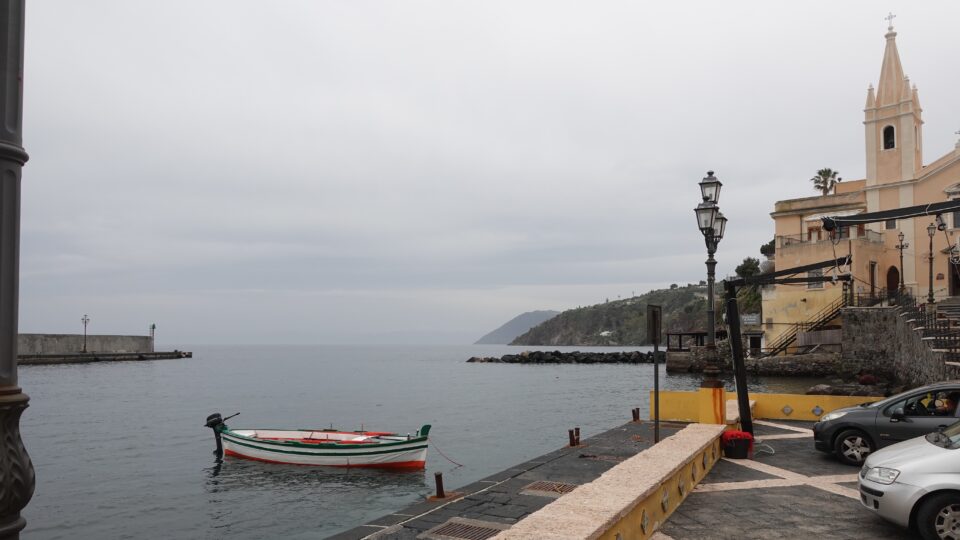
The return journey was rougher. The sea had become choppier, and visibility was low.
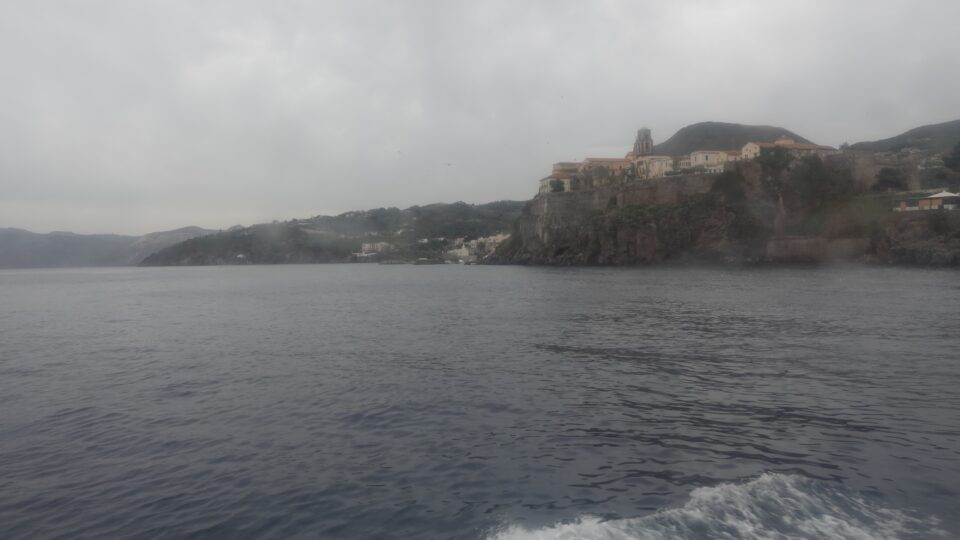
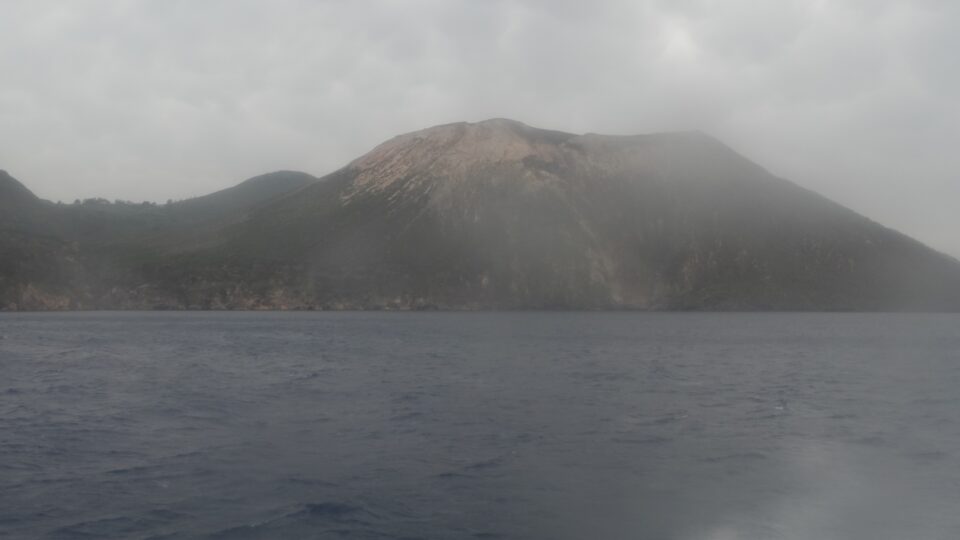
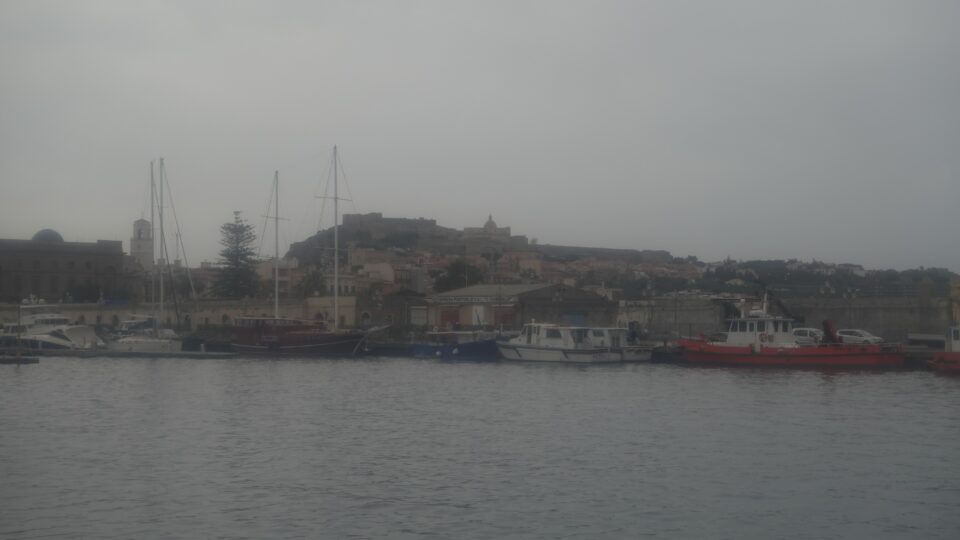
Back in Milazzo, we walked along the seafront boardwalk to our apartment. Just as we reached our doorstep, the rain began to fall—perfect timing after an interesting day.
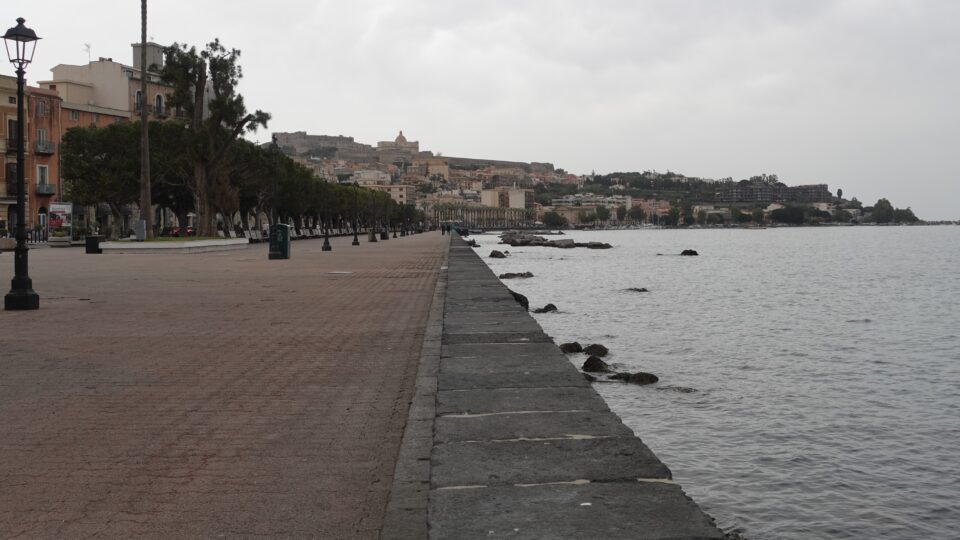
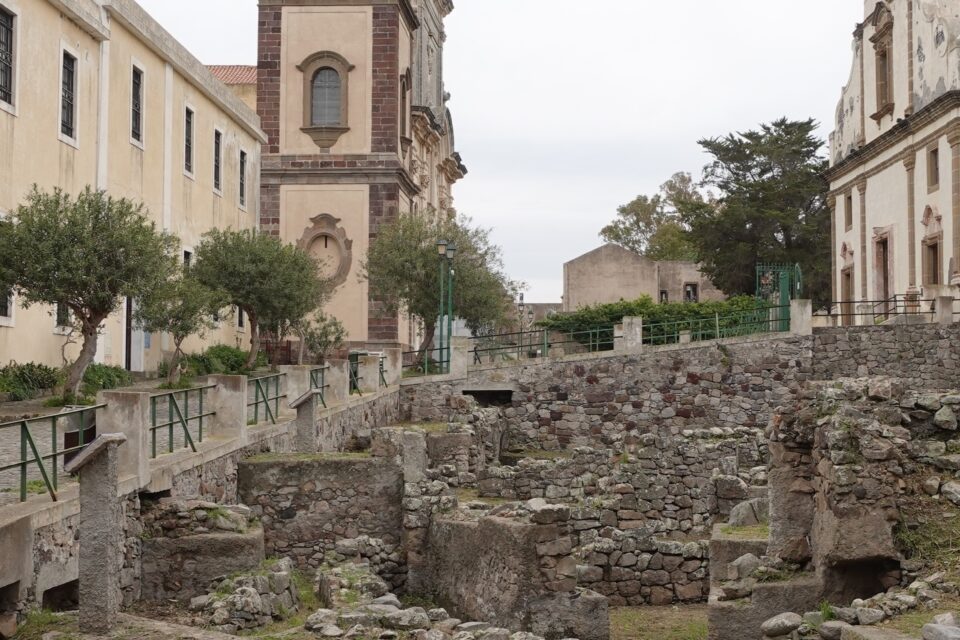
I can really feel the tension and the panic in your writing!! Happy you found the menorah after all! And why didn’t you do a mud bath??